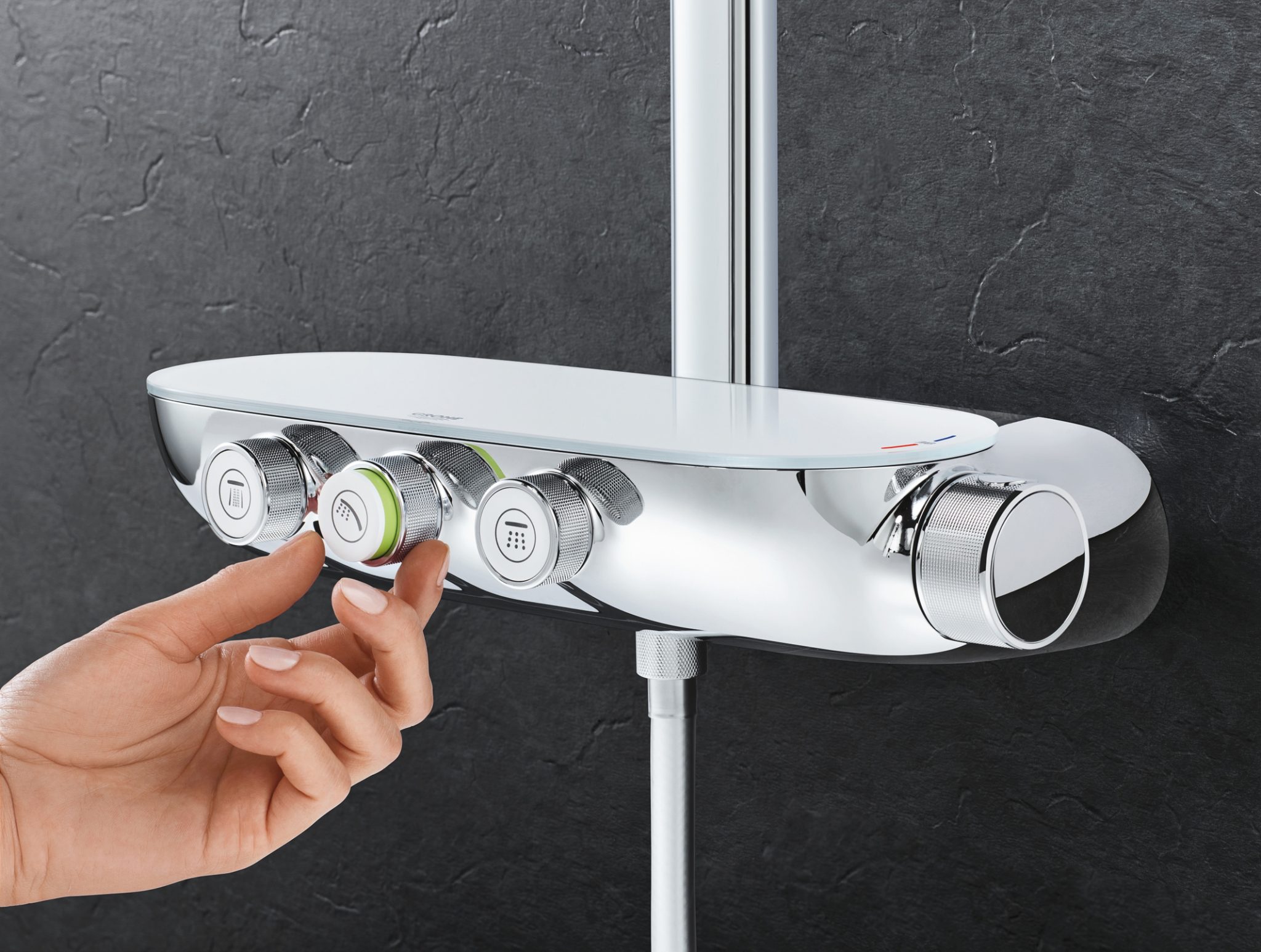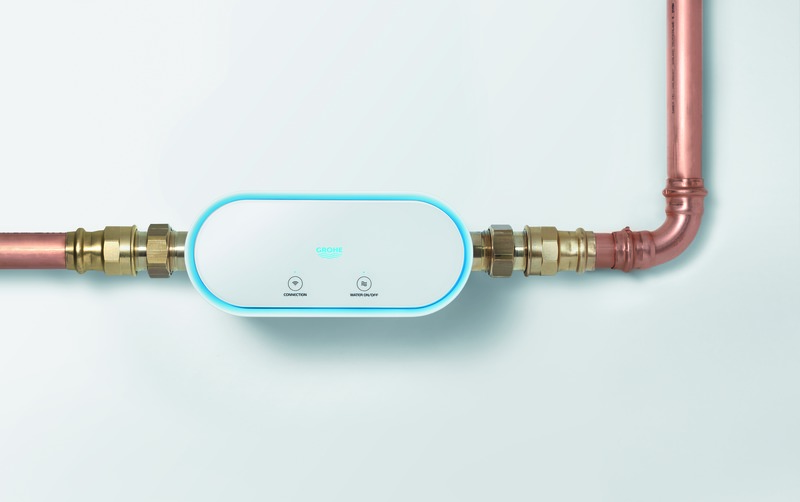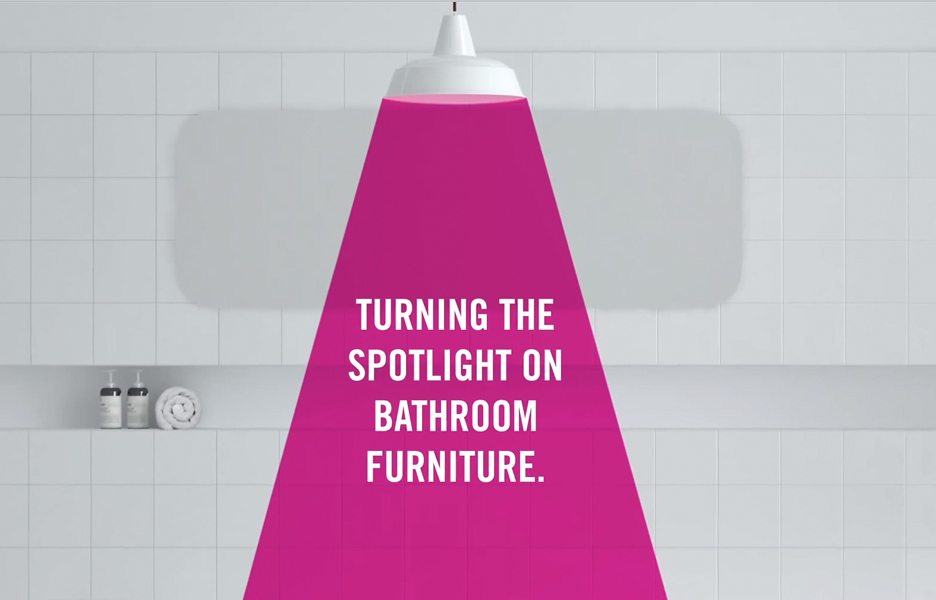
Grohe’s Michael Seum talks “messy creative processes” and innovation-led design
Grohe’s Michael Seum talks “messy creative processes” and innovation-led design
Share
Michael Seum has a passion for problem-solving. And it’s a passion that’s driving the future roadmap and design agenda for sanitary fittings manufacturer Grohe. As vice president of design, Seum is taking an innovation and benefit-driven approach to his creative process and ADR recently caught up with him to talk about design thinking, ground-breaking products and how technology is influencing his role.
Tell ADR a little bit about your role of VP design: what does a ‘normal’ day look like for you?
It’s two things: I lead the future roadmap and agenda for the company, so I set the design vision. I have an amazing team but I also have to inspire creativity. In addition to that, I get to be the storyteller, and not to knock the other functions, but design has this special power to visualise and that tends to gravitate with the architecture and design community. So I, fortunately, get to be the spokesperson for the brand, telling some of the stories.
It’s something I’ve had to grow in to in this role, but I really enjoy connecting with the design community because I get a million ideas from them: I have to design solutions for their environments, so for me, I have to embody empathy and understanding and then translate that into products. It’s people, it’s process, it’s projects and it’s storytelling.
How are you fostering innovation and what have technological advancements meant for Grohe’s product portfolio?
Somebody asked me what my innovation process is and I kind of laughed because I don’t have one. There are design thinking technologies, there are all these different processes, but the way I look at it is to understand what the consumer wants and needs and then apply the technology or the design solution to that. So, you define the problem and you create the solution and somewhere in between, there is a messy process of creativity that I really enjoy. I put the right people and the right talents together and then I have to connect the dots. The first question with the design is ‘what are we trying to do?’ and then ‘how do we do it’? That is the key, but there is no formula because every project is a different problem.
How is technology changing or influencing your role?
Quite a bit. Here’s an example: if you have travelled a lot and seen a lot of hotel showers, sometimes they’re harder to figure out how to control than to fly an aeroplane. But we have created a smart control technology giving you the ability to select and adjust water volume, which just doesn’t exist out there. Users can control different rain sprays on the showerhead or the hand shower all in one space. You can independently control the water from the sprays so you can almost mix your own shower experience [there 16 possible spray options]. So it’s super intuitive, it’s such a simple technology but it didn’t exist: it’s sort of a digital experience that we’ve made analogue.
The technology also allows you to adjust the shower to your needs at the time: at some point of the day you might want a relaxing shower and at other times, an invigorating one. Technology has to solve a problem and that’s how we look at it.

Grohe’s SmartControl shower
What are some of your latest products and how are they breaking new ground?
One of the key differences with our brands is the type of products that we are introducing into the market. There is a big innovation and benefit-driven approach at Grohe. Some of my highlights would be Grohe Sense and SenseGuard [not available yet in Australia] which is one of our very complex projects, and it solves water security. So, if you have ever experienced water damage in your home, this is a product that you put close to your main line water supply and it measures your overall consumption of water flow and it can detect if there is a small leak inside your pipes. It can prevent major damage from happening and it can also really change your behaviour because you start to measure consumption, you have some data on your water footprint. Water is not an unlimited resource, you have to respect it.
Then we have room sensors that go throughout the house that can detect a leak in a specific location and communicate back. You can control it with an application, it’s a smart home product and there is really nothing like it. It’s an open platform, so we have our own app, but we have also partnered with Nest [the connected-home device company] and it will be opened up to some of the other Internet of Things platforms.

Grohe SenseGuard
What challenges do you encounter when it comes to designing water products and how do you overcome them? Does it hinder the design process?
I really like this industry in the sense that, at first glance, it appears to be simple, it appears to be a connection to water and you style products around that. But there is a lot of consumer behaviour that we have to understand and there are different needs around the globe. Some of the challenges of being a global brand are that we develop products on a global basis but we somehow have to adapt them to regional or local needs so that becomes, ‘how do we juggle all these different needs from one country to another?’
If you look at behaviours around the toilet, for example, globally it is very different. So it’s really interesting and that poses the challenge of how do we meet the needs of all consumers? That’s why the challenges ultimately turn into opportunities if you dig into them enough. For most creatives and designers we like to solve problems so I think that is really the key.
You Might also Like

















